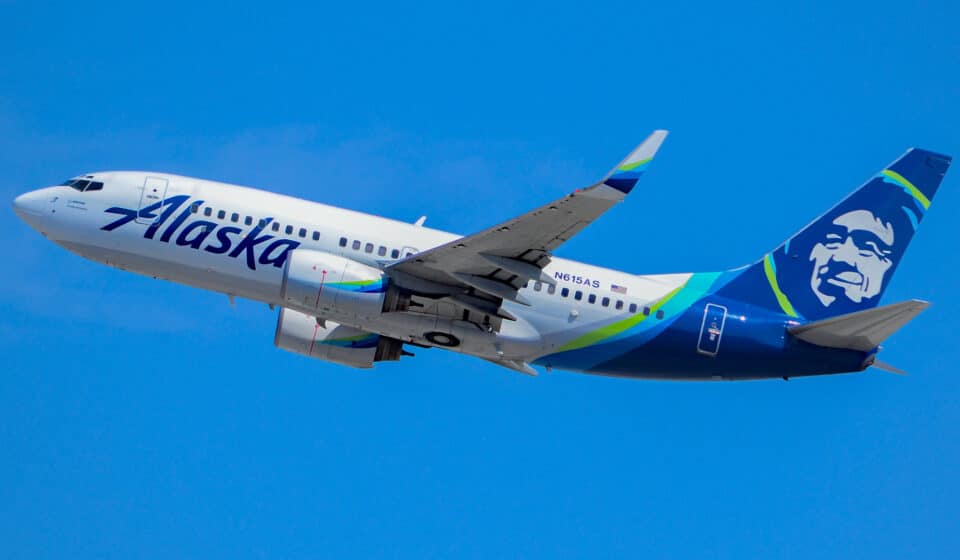Aerospace
Alaska Airlines one of first US Airlines to use virtual reality in pilot training
Alaska Airlines is one of the first US Airlines to use virtual reality in pilot training

The Flight Operations Training Center of Alaska Airlines now uses new technologies. Basic training for a pilot usually consists of classroom instruction, followed by half simulations, full simulations, and finally time in a real aircraft. Now, the first section of textbook training includes an introduction to virtual reality (VR).
The virtual reality goggles were utilised for the first time today by students like Scott Wathey, a newly hired First Officer with Alaska Airlines. Wathey compared it to how you know precisely where the snooze button is on your alarm clock in the morning. “This enables our muscle memory to remember exactly where that switch is,” said.
Pilots used flat posters that were taped to their walls to study before VR technology was available. The simulator’s lights and levers would require some getting used to. “We won’t need to waste four hours attempting to locate the switches when you begin your first simulator sessions. You can enter on day one and in the first minute and know precisely where things are “said Shawn Thumma, first officer for Alaska Airlines.
The technology has been in Alaska Airlines’ possession for almost a year, and it has been used for six months already. At a time when the airline is expanding its hiring procedure, this has happened. 300 Airbus pilots are currently learning to fly a Boeing 737 while 600 new pilots are being produced annually.
An essential action to assist in staffing airplanes and boost customer capacity. One of the first US airlines to deploy this VR technology is Alaska Airlines. They predict that because of its success, it will soon become the standard.

Aerospace
Boeing Transfers Rocket Stage to NASA, Paving Way for Human Moon Mission

Boeing has achieved a significant milestone by providing NASA with the second core stage of the Space Launch System (SLS) rocket.
This crucial component, crafted at NASA’s Michoud Assembly Facility (MAF), is set to propel the Artemis II crew into lunar orbit, marking humanity’s return to deep space after a 50-year hiatus.
The monumental Boeing-built rocket stage, the largest element of the Artemis II mission, will embark on a journey aboard the Pegasus barge, traveling 900 miles to NASA’s Kennedy Space Center.
Comparison of two legendary aircraft B777x vs B747 aircraft:Click here
Upon arrival, it will be meticulously integrated with other essential Artemis II components, including the upper stage, solid rocket boosters, and NASA’s Orion spacecraft within the iconic Vehicle Assembly Building. This intricate integration process is a vital step toward the eagerly anticipated Artemis II launch, slated for 2025.
“Boeing-built products helped land humankind on the moon in 1969, and we’re proud to continue that legacy through the Artemis generation,” remarked Dave Dutcher, vice president and program manager for Boeing’s SLS program. “Together, with NASA and our industry partners and suppliers, we are building the world’s most capable rocket and paving the way to deep space through America’s rocket factory in New Orleans.”
NASA, Lockheed Martin Reveal X-59 Quiet Supersonic Aircraft:Click here
The delivery of Core Stage 2 marks a significant achievement in the evolution of the SLS rocket. Towering over 200 feet and powered by four RS-25 engines, this core stage, coupled with two solid-fueled booster rockets, will generate a staggering 8.8 million pounds of thrust. This immense power is crucial to launching Artemis II and future missions into the vast expanse of space.
The SLS rocket stands unparalleled in its capability to transport both crew and substantial cargo to the moon and beyond in a single launch. Its extraordinary capacity will facilitate the delivery of human-rated spacecraft, habitats, and scientific missions to destinations including the moon and Mars, ushering in a new era of space exploration.
-

 Travel1 week ago
Travel1 week agoAir India to Expand US Operations with Three New Routes After a Decade
-

 Travel2 weeks ago
Travel2 weeks agoWhy We Should Avoid These Stamps in a Passport
-

 Airlines1 month ago
Airlines1 month agoInvestigations Reveal Fake Chinese Titanium in Boeing and Airbus Jets
-

 Tech4 weeks ago
Tech4 weeks agoChina’s CATL Plans 1,800-Mile Electric Plane Launch by 2027
-

 Airport3 days ago
Airport3 days agoTop 10 Largest Airports in the World by Size
-

 Aerospace4 weeks ago
Aerospace4 weeks agoChina’s Fighter Jets Turn Wings into Autonomous Drones
-

 Airlines4 days ago
Airlines4 days agoAir India Rolls Out A350s for Delhi-New York JFK and Newark Routes
-

 Defence3 weeks ago
Defence3 weeks agoBoeing Enhances Chinook with New Engines and Block II Upgrades at $96 Million







